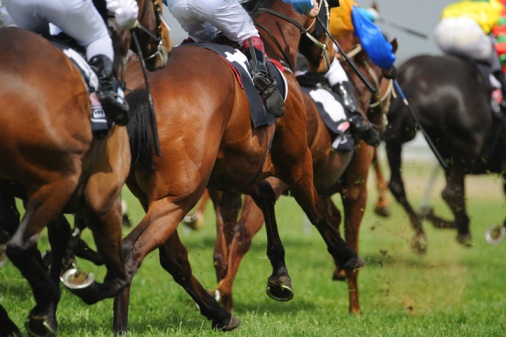How horses were cared for during the COVID-19 lockdown

During the lockdown measures put in place to restrict the movement of people and try to halt the spread of COVID-19, horse owners had to take steps to ensure the safety and wellbeing of their staff and their animals. As horseracing becomes the first sport to recommence after the easing of lockdown, Chris Williams, Global Practice Leader – Equine, Livestock and Aquaculture at AXA XL, explains how horses were cared for during the lockdown.
Strict hygiene and social distancing protocols were in place as horse racing became the first sport in the UK to get up and running again after a prolonged absence, following the COVID-19 lockdown. When Racing took take place at Royal Ascot, it was without the Queen, crowds or bookmakers. Jockeys and stall handlers were also required to wear facemasks and attendees had to undergo a three-stage screening process, including medical checks on arrival and departure.
Many sports fans were understandably delighted to see racing return, albeit under unusual conditions. And many race-horse owners too had been keen to see the sport restart; not least because the value of horses often is linked to the number of races they run - and win - over the course of their relatively short racing careers.
Lockdown care
During the lockdown necessitated by the COVID-19 pandemic, horse owners took measures to minimise the risks to their bloodstock and their staff.
COVID-19 affects primarily humans, and happily there have been no horses lost to the pandemic. There were, though, steps that owners of horses had to take to ensure the safety and wellbeing of their animals while restrictions of the movement of people – and in some cases goods – were at their height.
During the most stringent lockdown measures, the level of care given to horses did not waver. Owners were, by and large, able to manage supplies of feed, medical attention and supplies to horses. Indeed, in many cases, staff from other industries came in to help with the maintenance and care of horses while their jobs were on hold.
There were, however, some changes to routine.
The owners of livery horses – those kept for recreational purposes – were often not able to ride their horses because of the restrictions placed on the movement of people. Many of these owners moved their horses to full livery yards where they could be exercised safely by staff.
For the owners of many sports horses – those that compete in showjumping, dressage and eventing – the lockdown measures and postponement or cancelation of events meant some changes in strategy. Often training attention was switched to younger horses, who are more likely to be fit to compete in future events.
Some older race horses also were turned out to grass for an early break, while trainers focused their attention on younger horses likely to have more of a career ahead of them.
Social distancing and easing of lockdown
In many yards, staff live onsite or close together. These operations adopted common-sense procedures to ensure that government guidelines on social distancing were observed.
We expect yards to continue to follow sensible measures as lockdown measures are eased.
Horses from different yards often are transported by the same transport firms and it is not uncommon for neighbouring yards to share transport to and from events. As lockdown eases and horses are moved around again, yards must take care to allocate which staff travel with horses and how this is carried out according to the guidance issued by their relevant sporting bodies.
Horse racing became a sporting frontrunner in terms of restarting – albeit behind closed doors. And if the restart continues to go smoothly, with social distancing and the wellbeing of staff a priority, it could serve as a blueprint for the return of other sports.
Horse owners have managed the wellbeing and safety of their staff and their horses very well during this worldwide health crisis.
And for those of us who love horses, it is great to see them back doing what they do best during these strange and challenging times.
Authored by AXA XL
About AXA XL
AXA XL is the P&C and specialty risk division of AXA which provides property, casualty, professional and speciality products to industrial, commercial and professional firms, insurance companies and other enterprises, here in the UK and throughout the world. With underwriting teams based in the US, UK, EMEA and Asia Pacific regions, we can make decisions close to the markets you serve and work with you to tailor cover to your business needs.
We help businesses adapt and thrive amidst change. Rather than just paying covered claims when things go wrong, we go beyond protection into prevention so your business can go beyond the unexpected.

